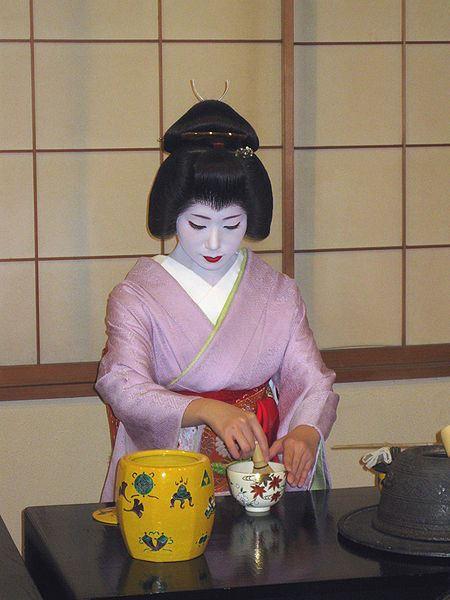One of the unique traditions that is tightly bound with the Japanese culture is the tea ceremony or the Tea Way. In Japanese that tea ceremony is called “chan yuo”, which denotes “tea with water”. “Chan” means “tea” and “yuo” means “water”. The Japanese tea ceremony is not a simple custom but the art of hospitality.
The tea ceremony is being taught at the special schools for several years. Though the whole process may seem easy and plain there is no limit to betterment. The skills of a Japanese girl, who can meet the guests, usher them in a room and offer them a cup of aromatic tea are considered to be the highest mastery of esthetics.

Moreover the Way of Tea is the way to understand the mentality of the Japanese people. The tea ceremony is aimed not only to carry out a tasting of the splendid tea but also to acquire calm meditative mood which helps to osmose Zen. This ceremony allows its participants to abstract away from their ego and feel the unity.
The tea ceremony reflects the culture of Japan like a mirror. It helps to understand the nature of unbelievable diligence of the Japanese, their sense of beauty and their passion for laconism and refinement. It is a vivid example of the ability of this nation to acquire and adopt the traditions of other ethic groups without losing their national individuality.

The plain evening tea developed into the whole ceremony in the fifteenth century when Zen Buddhism became popular. The basis of the ceremony is the the combination of open sincerity and natural disengagement. There are four principles of the ceremony, documented by Buddhist monk Syuko in the end of the fifteenth century. They are:
- Naturalness and serenity
- Laconic interior
- Utensils appropriate to the age of the guest
- Total ataraxy
According to Syuko these principles help to reach the accord of the guest and the host, which would allow them to understand each other without saying a word.

